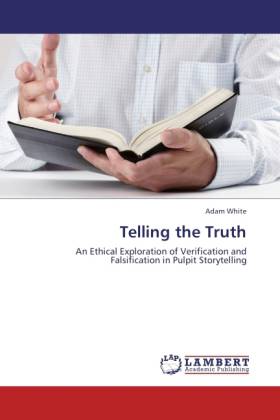
- Afhalen na 1 uur in een winkel met voorraad
- Gratis thuislevering in België vanaf € 30
- Ruim aanbod met 7 miljoen producten
- Afhalen na 1 uur in een winkel met voorraad
- Gratis thuislevering in België vanaf € 30
- Ruim aanbod met 7 miljoen producten
Zoeken
Telling the Truth
An Ethical Exploration of Verification and Falsification in Pulpit Storytelling
Adam White
Paperback | Engels
€ 48,45
+ 96 punten
Omschrijving
Christian preachers are expected to tell the truth, especially in the pulpit. Yet, how much does a concern about truthfulness really play into a preacher's choices about what to say? Where does a good illustration end and lying begin? Adam White, preacher and teacher, explores what tools preachers have to keep them truthful in their storytelling and the real challenges that preachers face in being truthful in the pulpit. Moving past historicity as the ground for truthfulness, White suggests that pastors can reclaim a type of verification in their work grounded in the community in which they preach. Through a careful examination of the contemporary history of truth in preaching, and analysis of the commandment, "You shall not bear false witness against your neighbor," White invites and equips preachers to take truth seriously from preparation to delivery and beyond.
Specificaties
Betrokkenen
- Auteur(s):
- Uitgeverij:
Inhoud
- Aantal bladzijden:
- 108
- Taal:
- Engels
Eigenschappen
- Productcode (EAN):
- 9783845479163
- Verschijningsdatum:
- 14/09/2011
- Uitvoering:
- Paperback
- Formaat:
- Trade paperback (VS)
- Afmetingen:
- 152 mm x 229 mm
- Gewicht:
- 167 g

Alleen bij Standaard Boekhandel
+ 96 punten op je klantenkaart van Standaard Boekhandel
Beoordelingen
We publiceren alleen reviews die voldoen aan de voorwaarden voor reviews. Bekijk onze voorwaarden voor reviews.











